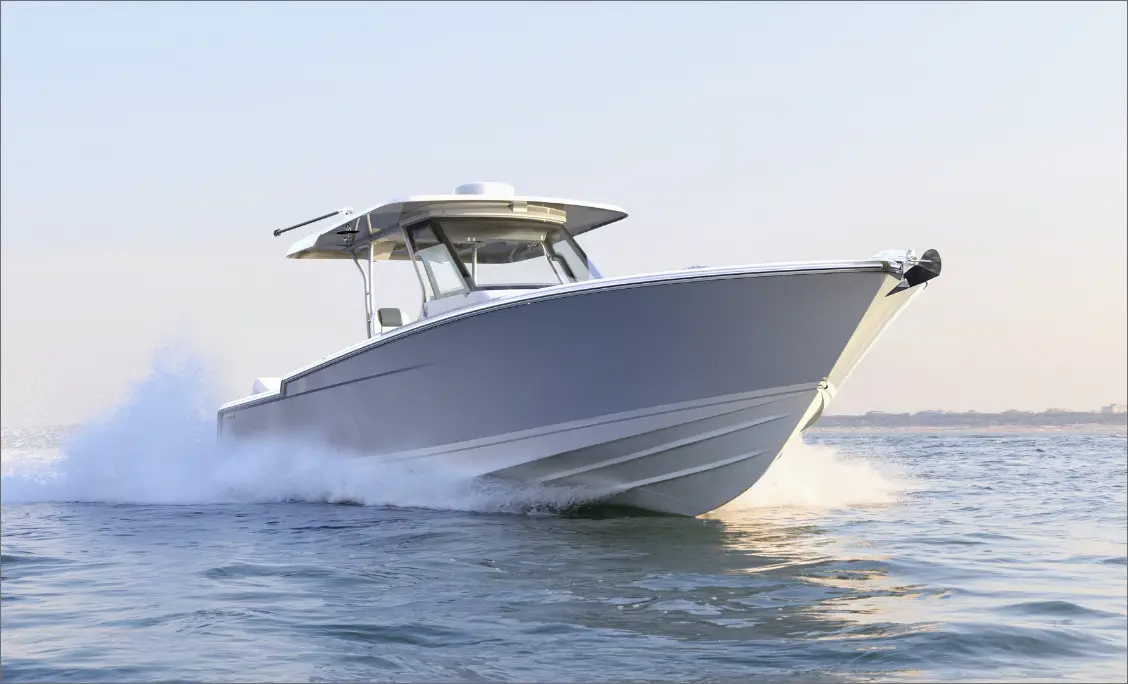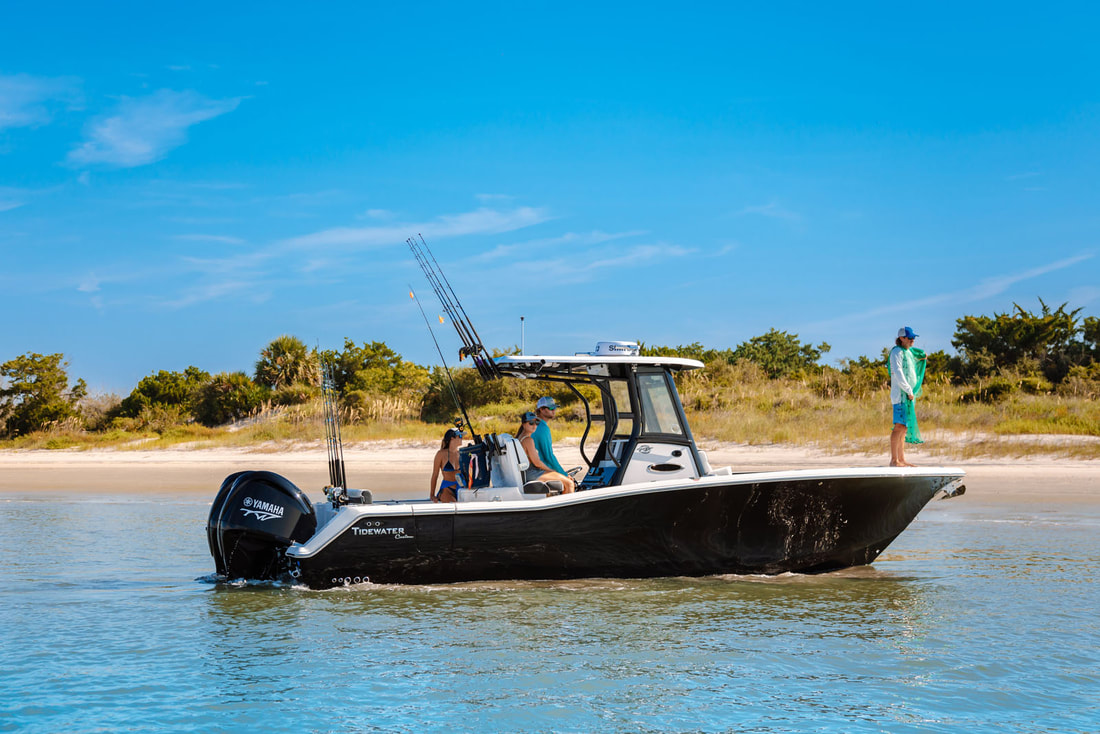Stern Ship Design: Innovations and Modern Applications
The stern of a ship plays a crucial role in its design, functionality, and overall performance. As the aft-most part of a vessel, the stern serves a variety of purposes, including aesthetics, stability, and hydrodynamic efficiency.
Over the years, the design and features of ship sterns have evolved significantly, driven by advancements in naval architecture and shipbuilding technology. Nowadays, there are various types of sterns utilized across different types of ships, each with its own unique advantages and characteristics.
A ship's stern not only influences its appearance but also has a direct impact on its propulsion, maneuverability, and handling. Different stern styles can enhance the vessel's overall efficiency, with specific designs optimized for a particular purpose or ship type.
As a result, the choice of stern has a significant bearing on a ship's performance in navigation and overall sailing capabilities.
Key Takeaways
- The stern of a ship plays a crucial role in its design, functionality, and overall performance.
- Different stern styles can impact a vessel's propulsion, maneuverability, and handling.
- Technological advancements and evolving demands continue to shape the design and features of ship sterns.
Stern Design and Functionality
Types of Sterns
The design of a ship's stern plays a significant role in its functionality and performance. There are several types of sterns utilized in naval architecture, including:
- Transom stern: This is a flat, vertical surface, commonly used in small boats.
- Elliptical stern: Also known as cruiser stern, it features a rounded shape, providing better hydrodynamics and is often found on cruise ships.
- Canoe stern: Resembling the shape of a canoe, this stern design is efficient and reduces wave-making resistance.
- Counter stern: Characterized by an overhanging aft deck, this design improves hydrodynamics and was popular in early 20th century steamships.
- Merchant stern: Designed for container ships and bulk carriers, this stern shape ensures maximum cargo capacity and easy loading/unloading.
- Flat stern: A simple, cost-effective design, suitable for ships that require less stability and maneuverability.
Other less common stern designs include the reverse stern, bustle stern, lute stern, and round stern.
Stern Efficiency and Hydrodynamics
The various stern designs have differing effects on a ship's performance, focusing on stability, maneuverability, and fuel efficiency. A well-designed stern contributes to the hydrodynamic efficiency of a vessel, reducing drag and wave resistance.
These design aspects are crucial for the performance of the ship, as an efficient stern improves propulsion and maximizes fuel efficiency.
Moreover, certain shapes, such as the elliptical stern, offer enhanced stability and maneuverability even in rough seas, which is essential for the safety and comfort of both the crew and passengers.
Structural Components of the Stern
The stern is composed of multiple structural components, including the sternpost, a critical element that connects the aft end of the ship to its rudder. The sternpost allows ships to change their course, playing an essential role in maneuverability.
Another vital structural component is the area around the propellers, as the stern's design and shape directly affect their performance.
For instance, a stern with enough clearance around the propellers ensures efficient water flow, leading to improved propulsion and less resistance.
Stern in Ship Propulsion
The Role of Rudder and Steering Gear
The stern is an integral part of a ship's propulsion system. It houses essential components such as the rudder and steering gear.
The rudder is a flat, vertical blade that extends into the water, and it plays a crucial role in determining the direction of the ship. The steering gear, on the other hand, is a mechanical system that controls the rudder's movement, enabling precise navigation and maneuverability.
Propellers and Propulsion Efficiency
Another critical component located near the stern is the propeller, which converts the rotational energy from the ship's engine into forward thrust.
The efficiency of propulsion depends on several factors, including the propeller's design, size, and material.
To improve propulsion efficiency, engineers focus on reducing frictional resistance between the propeller and the surrounding water.
This is achieved by minimizing the formation of cavitation (i.e., the formation of vapor bubbles) around the propeller blades and by optimizing the hydrodynamics of the stern region.
Rake and Pitch: Influences on Stability and Speed
Two key parameters related to a ship's stern are rake and pitch.
Rake refers to the angle at which the keel line slopes towards the aft section of the ship, whereas pitch refers to the inclination of the propeller's blades.
The rake and pitch of a ship's stern have a significant impact on the vessel's stability, speed, and maneuverability.
For example, a ship with a high rake may experience better stability in rough seas, while a lower rake may lead to higher speeds due to reduced water resistance.
Additionally, the pitch of the propeller blades can influence how effectively the propeller transfers energy to the water, which in turn affects the ship's propulsion efficiency.
Stern Aesthetics and Features
Integration of Form and Function
The stern of a ship plays a crucial role in the vessel's performance, stability, and maneuverability. A combination of aesthetics and functionality is often found in stern design.
One of the primary features of modern ships is the transom stern. Characterized by a flat, vertical end at the rear of the ship, this design offers simplicity in construction and improves the vessel's hydrodynamic performance ^1^.
Another essential feature of the stern is the stern tube that houses the propeller shaft while ensuring minimal friction and watertight integrity. The tube also plays a vital role in the propulsion system of the ship, transferring power from the engine to the propeller.
Aesthetic Appeal and Cultural Significance
The stern of a ship serves as a canvas for artistic expression and cultural significance. Different shipbuilding cultures have contributed unique designs, combining functionality with aesthetic appeal ^2^.
Historically, the taffrail, an ornamental railing at the ship's stern, has been used for both decorative and safety purposes.
In American shipbuilding culture, stern lights remain an integral aspect. These lights, comprising of stern light and stern lights, serve as navigational aids, helping other vessels identify the ship's direction and position. They also contribute to the overall aesthetic appeal of the ship.
Moreover, the stern's hardware, such as cleats and swim platforms, is often designed with both functionality and appearance in mind.
For instance, the swim platform not only provides easier access to the water but also offers additional space for a dining area or lounging.
Stability and Dynamics at the Stern
Buoyancy and Stability Considerations
The stern of a ship significantly influences its buoyancy and stability. A well-designed stern adds to the vessel's stability, which is essential for the overall performance of the ship.
One crucial aspect of stern design involves the use of frames and stiffeners to provide structural support and enhance the stern's resistance to slamming forces.
Different stern shapes, such as transom and fine stern, also affect the ship's buoyancy. A ship with a fine stern, for example, has a more streamlined shape that allows for better water flow around the hull. This design contributes to improved buoyancy and stability, compared to a ship with a transom stern.
Impact on Ship Maneuverability
The stern's design impacts maneuverability, with certain stern shapes offering more precise navigation capabilities.
The incorporation of features like a chine or skeg in the stern design enhances the ship's handling and maneuverability.
Understanding the interaction between the stern and ship stability helps designers optimize the stern's design to achieve better maneuverability.
Some key factors in the stern's design that affect maneuverability include:
- Skeg: A skeg is a longitudinal extension of the keel which provides additional stability and directional control, especially when turning or maneuvering at low speeds.
- Chine: The chine is the junction between the bottom and the side of the hull, which affects the flow of water around the hull and, consequently, the ship's maneuverability.
- Frames and Stiffeners: These structural components not only enhance the ship's stability but also increase its resistance to slamming forces during rough seas.
Proper placement of frames and stiffeners is crucial to maintain maneuverability in high-stress situations.
Stern Use in Different Ship Types
Cargo Ships and Freight Transport
The stern design in cargo ships plays a vital role in their functionality.
One of the common stern designs used in cargo ships is the transom stern, which provides efficient use of space and helps in accommodating large cargo holds.
The engine room is usually located at the aft of the ship, near the stern.
Additionally, the stern houses navigation lights which are essential for safe and efficient maritime transport.
Cruise Ships and Ocean Liners
In cruise ships and ocean liners, the stern is designed to provide maximum comfort and stability for passengers.
The stern design involves the engineering of various features including spacious quarters, recreational areas, and other amenities that contribute to an enjoyable topside experience for passengers.
The hydrodynamic features of the stern also play a crucial role in ensuring a smoother ride, particularly in rough seas, which is essential for the comfort and well-being of passengers.
Military Vessels and Specialized Ships
Military vessels such as aircraft carriers and specialized ships are designed with unique stern features to fulfill their specific purposes.
The stern of military vessels often includes reinforced underwater sections and armor decks to withstand potential threats.
Additionally, the design of the stern in specialized ships ensures optimum maneuverability, making it easier for the vessel to perform critical operations at sea.
Technological Advancements and Future of Sterns
Innovations in Stern and Propulsion Structures
In recent years, there has been a significant focus on improving the efficiency and performance of sterns in various types of ships, such as sailboats, motorboats, and large vessels.
One of the major advances is the development of innovative propulsion systems like sterndrives and forward drives.
These systems combine the advantages of inboard and outboard motors, providing better maneuverability and forward thrust.
Modern ships are also incorporating new types of sterns in their designs, such as the cutaway and fantail stern.
The cutaway stern allows for easier access to swim platforms and improves overall performance.
On the other hand, the fantail stern, highly popular in historical ship designs like the SS Constitution, is now being digitally reconstructed using 3D modeling and computer simulations, offering a deeper understanding of maritime heritage and design.
The ship navigation lights, rudder post, and tiller systems have also seen improvements to enhance the basic function and effectiveness of the ship's steering and control.
Environmental Considerations and Efficiency
Environmental sustainability is a crucial aspect of modern ship design.
Designers are striving to reduce the ecological footprint of their vessels, and the development of more efficient sterns is an essential part of achieving that goal.
Many new designs, like stern landing vessels, aim to minimize environmental impact during marine operations.
For example, the Marine Corps is testing its first stern landing vessel that is designed to operate with a large ramp, landing legs, and added protection under the propellers and rudders.
These innovative features not only increase the efficiency of the ship but also reduce the potential for environmental damage during landings.
Some recent advancements in ship design include:
- High-efficiency engines: Reducing fuel consumption while increasing power output. This results in lower emissions and improved environmental performance.
- Hybrid propulsion systems: Combining traditional engines with electric motors to decrease pollution and enhance energy efficiency.
Frequently Asked Questions
What are the main parts of a ship and their functions?
A ship is composed of various parts that serve specific functions in the vessel's operation and stability.
Some main parts include the hull – the ship's main body and backbone, providing buoyancy and protection against water ingress; the superstructure – the area above the hull, which houses crew accommodations, the bridge, and other essential facilities; the masts and sails (for sailing vessels) – used for propulsion through wind power; the deck – flat surfaces on a vessel where crew members work and passengers take leisure; the rudder – located at the stern of the ship, enabling steering and navigation; and the power source, such as engines or sails, responsible for the vessel's propulsion.
What is the purpose of the stern on a ship?
The stern plays a crucial role in a ship's design and function.
Its primary purpose is to offer space for the tiller and steering device, ensuring control and maneuverability.
In some vessels, the outboard motor is also situated at the stern.
Moreover, the shape of the stern can influence a ship's resistance, maneuverability, and stability while sailing.
How does the design of a transom stern differ from other types?
A transom stern is characterized by its flat, vertical surface at the aft end of the vessel, formed by a structural beam called the transom.
It differs from other stern types such as the elliptical stern – which features a rounded, curved shape – and the cruiser stern – which has a slightly downward slope.
The design of the transom stern provides advantages such as increased stability, better hydrodynamic flow, and the ability to accommodate larger propulsion systems.
What are the differences between the bow and the stern of a ship?
The bow refers to the front part of a ship, while the stern is the rear section.
The bow is designed to slice through the water, reducing water resistance, and determining vessel stability and speed.
The stern, as mentioned earlier, houses steering elements, such as the rudder and tiller. It can also support propulsion systems, like outboard motors.
The shapes of both the bow and stern play a role in the ship's hydrodynamics, affecting its overall performance and maneuverability.
How do the terms 'aft' and 'stern' differ in nautical terminology?
While 'stern' refers to the rear or back end of a ship, 'aft' is a directional term describing the position of an object or a person relative to the stern.
For example, when something is located towards the back of the ship, it is said to be 'aft' of its original position.
Therefore, 'stern' is a fixed physical part of a ship, while 'aft' is used to describe relative locations or directions on the vessel.
What role does the stern play in the maneuverability and performance of a ship?
The stern is vital to a ship's maneuverability and performance because it houses crucial control elements like the rudder and tiller.
The rudder helps direct the flow of water, enabling the ship to be steered. Meanwhile, the stern's design can also impact the vessel's hydrodynamic properties, such as resistance, drag, and stability while sailing.
Different types of sterns offer varying performance benefits based on the ship's purpose, speed, and weight.
Charlie is Editor-in-Chief of Sea Magazine







